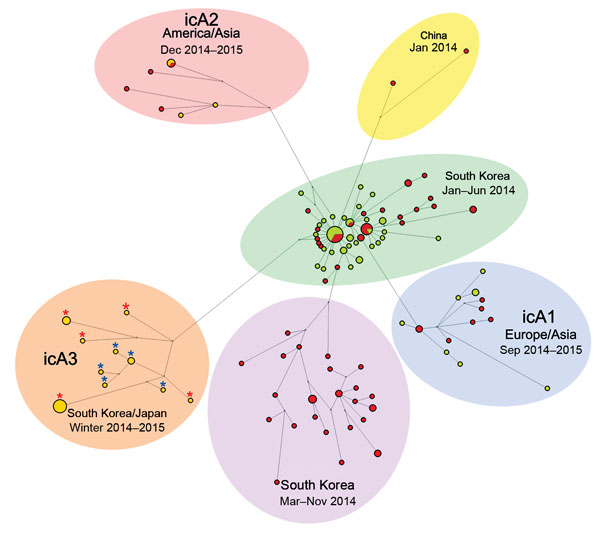Volume 22, Number 3—March 2016
Dispatch
Highly Pathogenic Avian Influenza A(H5N8) Viruses Reintroduced into South Korea by Migratory Waterfowl, 2014–2015
Figure 1

Figure 1. Median-joining phylogenetic network of highly pathogenic avian influenza A(H5N8) viruse isolates identified in South Korea during 2014–2015 showing relationships with other virus isolates. The median-joining network was constructed from the hemagglutinin gene and includes all the most parsimonious trees linking the sequences. Each unique sequence is represented by a circle sized relative to its frequency in the dataset. Branch length is proportional to the number of mutations. Isolates are colored according to the origin of the sample: red inner circle, poultry farm isolates; yellow inner circle, wild bird isolates. Red asterisks indicate isolates from South Korea and blue asterisks indicate isolates from Japan identified during December 2014–February 2015.
1These authors contributed equally to this article.